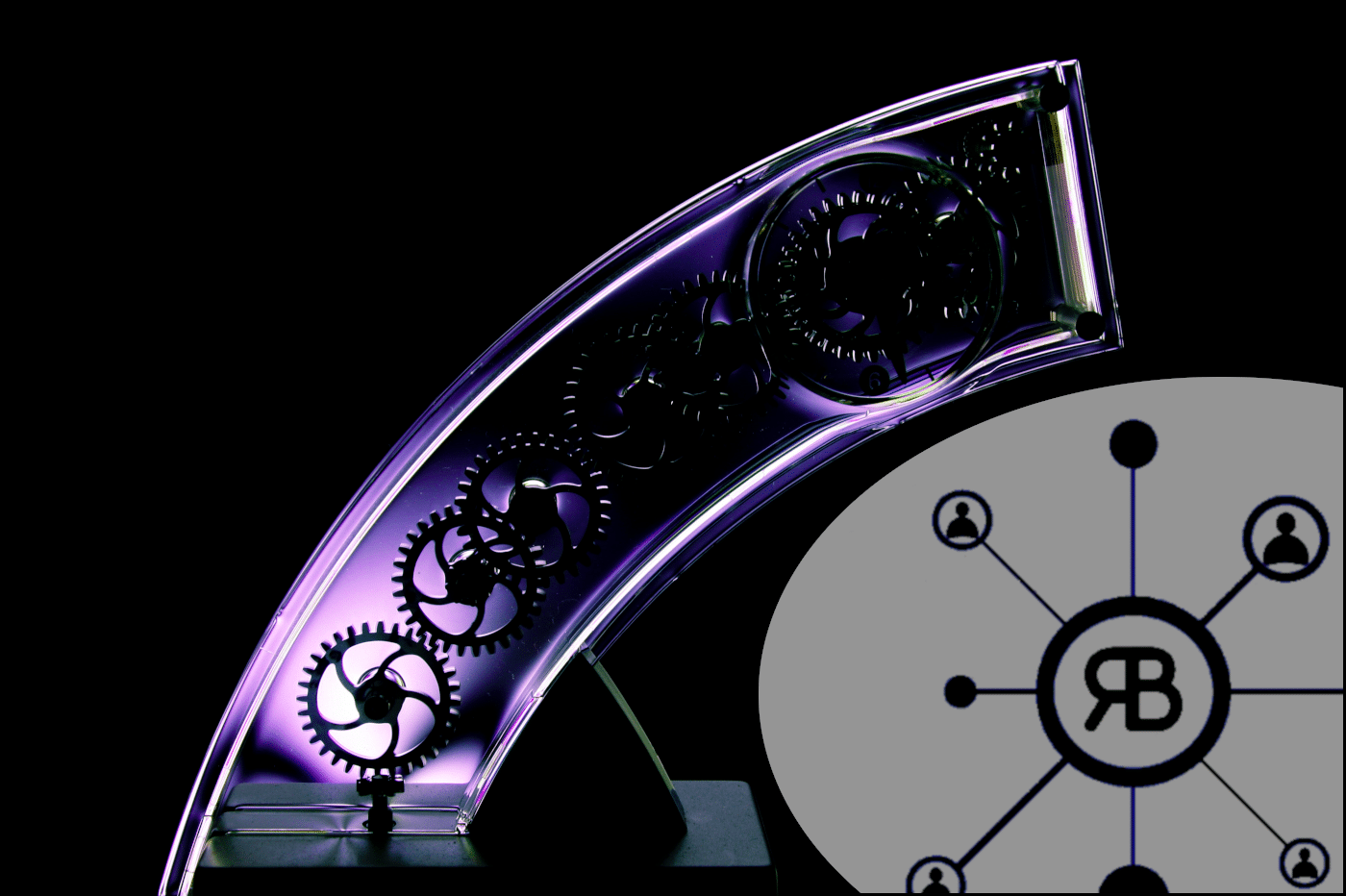During the last French local elections, we worked with a politician on his election campaign. We used a marketing automation tool (specially developed for this particular case…). But more than talking about political marketing, let’s focus on what Marketing Automation is and what are the fundamental characteristics of a good automation software. It is an innovative technology that integrates conventional and digital marketing in a single platform. This technique, as the name suggests, automates all the processes derived from a marketing strategy.
Its goal is to guide potential customers in their purchase of a product or service, turning them into “loyal” ambassadors for your brand (your ideas). The objective of this automation is to increase the acquisition of new customers. But also to consolidate existing customers and increase sales, while reducing time and total costs. In an electoral process, these customers are obviously the voters.
Automation is a necessity to develop your marketing
Marketing automation is changing the way we work. In fact, 49% of companies use it and this percentage increases to 55% in the case of B2B. The most frequent uses are emailing, lead nurturing campaigns, and all web marketing activities aimed at establishing a privileged and trusted relationship with the potential customer. To do this, these organizations use different web channels that aim to convert the prospect into a customer by integrating other platforms such as CRM.
Thanks to the automation of repetitive tasks, marketing automation increases productivity by 15%, and 75% of companies that use it. Furthermore, on average, these organizations start to see a return on investment within 12 months of adoption.
Its application is growing little by little. Indeed, it provides answers and solutions to some of the needs of companies seeking to achieve their business goals. Marketing automation encompasses all aspects of the business, its objectives are the same as those of the organization and all departments must be involved in a new corporate culture.
Automation processes are usually focused on sales optimization. The best way to achieve this is to increase the value offered to customers. Each industry and company needs to find the solution that works best for them, based on the most comprehensive marketing automation platforms and the largest possible database.
What marketing automation includes
Marketing automation is a discipline, managed by specialized technology solutions, that covers several activities. These activities are often managed separately by various non-integrated platforms and applications. Some of the activities that are part of marketing automation include:
- Email marketing
- Optimized landing page
- Campaign management
- Scoring
- Integration with CRM
- Social Media Marketing (SMM)
- Marketing Analytics
The idea is to unify everything in one tool. It should include all these different elements so that you can have an overview of all your organization’s campaigns and activities.
How does marketing automation work?
The goal is to maximize the effectiveness of each action, simplifying activities and processes through automation. All this from a total enterprise perspective, with the aim of attracting the largest number of potential customers and converting them into satisfied and loyal customers, through specific and personalized actions.
Automation systems allow for the most effective marketing teams, without neglecting the creative and personalization aspects, while providing useful data and metrics to improve campaign effectiveness.
Simply put, marketing automation is the set of activities, technologies and processes that help companies reach the right people, with the right message, at the right time.
What are the benefits of marketing automation?
When used correctly, marketing automation is an extremely powerful tool for all types of businesses.
Here are some of the main benefits of marketing automation:
- Segmenting the audience in an automated way based on the phase of the sales cycle your customers are in;
- Reduced customer acquisition cost (CAC);
- Greater efficiency in medium and long term prospecting, for example by sending automatically generated personalized messages, thus avoiding the company to lose business and sales opportunities;
- Ability to analyze and measure the actions with a better conversion rate and obtain a better return on investment (ROI);
- Increase revenue by aligning the sales department with the marketing department.
What are the components of marketing automation?
Automation and measurement are the two pillars of marketing automation. As such, they must be present in the technical features of the automation solution your organization chooses to adopt.
The automation component is the basis for the ease with which you can create and manage multi-channel communication campaigns. Different tools can be used, from email to SMS, from app to landing page, to social networks… All personalized content and marketing actions can be managed automatically, without the continuous intervention of people working in the marketing department.
On the other hand, being able to measure your actions is essential. To do this, you need to have tools that allow you to control the whole campaign process. Thus, it is necessary to measure trends, performance, return on investment, and efficiency. An automation software should, in principle, allow you to perform the following activities:
- Track users who visit the web page, recording the pages visited and the time spent ;
- Create emails, landing pages, and registration forms;
- Record the responses contained in the forms;
- Manage lead nurturing campaigns: automatically run the campaign, send a sequence of separate messages based on different segments, change the sequence of response messages based on contact behavior;
- Calculate the lead scoring for each contact in the database, as well as the activities performed and the “rules of engagement”;
- Provide complete reports on the different activities and results;
- Connect to the company’s chosen CRM.
What can you do with a marketing automation platform?
Based on these considerations, it’s easy to come up with a list of features that should be present in a marketing automation platform:
- Lead nurturing: automating “drip marketing” activities by automatically sending emails and messages, tracking the actions and behavior of users (customers, prospects, target customers), and with predefined phases of a marketing campaign. A well-written welcome message can help immediately identify each contact’s area of interest, qualifying them for a specific educational path on a product and/or service offered by the company.
- Lead scoring: automatic lead scoring based on several predetermined parameters (geographic data, behavior, time, and frequency of actions) and automatic prioritization of different actions.
- Segmentation: subdivision of the database, application of filters, and creation of groups of prospects for the optimization of personalized campaigns.
- Email creation and personalization: editor for email creation and management.
- Automatic email response: configure response and support emails so that they can be sent automatically based on events, actions, lead scoring.
- CRM integration: Synchronize information with the company’s CRM.
- Marketing database: a database that contains all the information related to actions, relationships between the company and acquired or to be acquired, potential customers.
- Social media monitoring: network monitoring is the monitoring and analysis of user conversations on social networks; it is a useful tool for gathering information to feed the prospect database, prospect scoring, target segmentation, and campaign personalization.
- Personalization: an automation system for personalizing campaigns and messages according to campaign requirements and objectives.
- Online behavior monitoring: monitoring and analysis of user behavior (number of emails they open, number of clicks, websites they visit, number of forms they fill out, keywords they use).
- Create and manage landing pages and forms: tools to accelerate the development of landing pages and forms that help maximize conversion rates.
How to leverage marketing automation in the enterprise sector
All marketing automation studies show improvements in sales, conversions, and ROI. The reality is that about 40% of businesses are not getting the results that could be achieved by implementing this technology.
Before choosing a marketing automation platform, it’s a good idea to define an implementation strategy. For example, you need to define how and when to acquire leads. Most importantly, you need to know when they are ready to be transferred to the sales department. This last point is often the most difficult in defining an effective strategy.
A good implementation of a marketing automation platform includes integration with CRM, ERP. In addition, you need to add the identification of the customer profile, segmentation, quality of content associated with each phase of the sales cycle, and depending on the type of product, the analysis, and evaluation of results and their optimization.
What to do before choosing a marketing automation platform?
Before purchasing marketing automation software, you should consider these 3 areas of thought:
A) Preliminary actions: establish an online presence, generate leads, and track them.
A good first step to channel marketing is to make sure they can find us if someone is looking for us. This includes creating a search engine optimized website, providing quality content, creating and maintaining a social media presence.
Once an online presence is established, you need to facilitate the visibility of your content. The goal is to allow your visitors to contact you. Most automation systems provide comprehensive analytics to optimize the lead acquisition process.
After establishing a presence and capturing leads, you need to follow up and convert them into sales. In this case, the various tools are used to increase your conversion rate.
B) Know which marketing channels to us
Most automation tools focus on four channels:
- Web: managing and analyzing content on the company’s website or external pages and optimizing search ;
- Emailing: sending emails to generate new leads and follow up on existing ones;
- Social Networking: managing the brand’s presence on the various social channels it chooses to use, listening to the network, monitoring activities (including those of competitors), and managing and distributing content across all channels;
- Mobile: mobile messaging and SMS marketing.
C) Pay attention to data integration
Often, data that should be used to automate a marketing process is stored in another system (CRM, ERP, image archive, etc.). The increase in data and systems needed for integration can increase the cost of maintenance and upkeep.
How to create content the easy way?
The primary cause of the failure of these automation solutions is the lack of appropriate and quality content. It’s a daunting task and takes time to define who is responsible and the product line. It is also difficult to define the type of content and what type of customer to deliver it to. In many cases, messages are repeated indiscriminately for all customers. As a result, this can convey the wrong message and reflect poorly on your organization.
The key is to look for reproducible and simple solutions. This way, you will get excellent results in a short period of time. Thus, it is necessary to create a list of customer problems that the product/service can solve. For each of the identified problems, find information on the Internet, contact associations… To better identify these problems, the creation of personas can be of great help.
Write short emails highlighting the problems (How much money/time do you spend on this problem?). Use the information needed to drive action from the potential customer (“call to action”, e.g. “Watch this video”).
Then, you’ll need to analyze how prospects respond to different messages to modify the communication if necessary. Content should be created from the customer’s perspective. It should explain how the product/service provides the solution to the problem raised.
After the first results, you will get more knowledge. With these, you will create high-quality content: white papers, articles, case studies, podcasts, and videos to :
- Perform an effective lead nurturing process on prospects that have not been converted into new customers;
- Build trust with your new prospects;
- Educate current prospects as they progress through the conversion funnel.
How do you improve lead conversion?
The big issue in marketing, both in its digital and traditional aspects, is conversion. Companies invest in traffic generation with tools like SEO, SEA, events, social media, etc. All this generates traffic that needs to be converted. To do this, landing pages, email campaigns, personalized content, etc. must be generated.
The success of a conversion process also depends on the objective of the company. Nevertheless, there are some tips that can be adequate regardless of your goals:
- Loading speed is important, the faster the page loads, the better it will convert;
- Limit the number of items needed to avoid distractions;
- Place the call to action in strategic and visible places;
- Personalize the content according to the visitor (A/B testing);
- Ask for the minimum information needed to generate a contact;
- Add reviews from customers who already use the product/service;
- Try different types of calls to action.
Marketing automation facilitates some conversion techniques:
- Personalizing email content;
- Segmenting the audience according to different criteria established by the company;
- Creating rules that automatically respond to customer actions;
- Use of a scoring system.
*****
Thus, marketing automation will contribute to the development of your organization. It will be an essential basis for all growth hacking strategies.
If you would like personalized support in this automation process or the implementation of growth hacking strategies, we are at your disposal. Do not hesitate to contact us!




